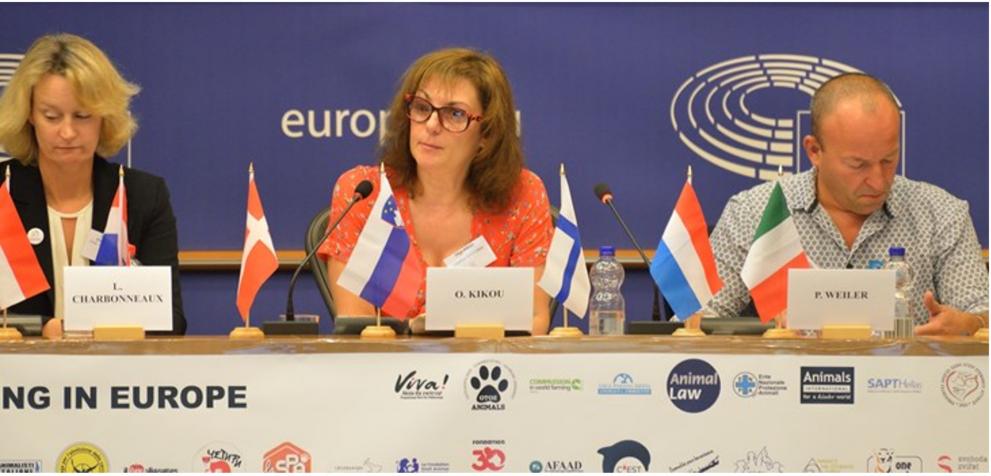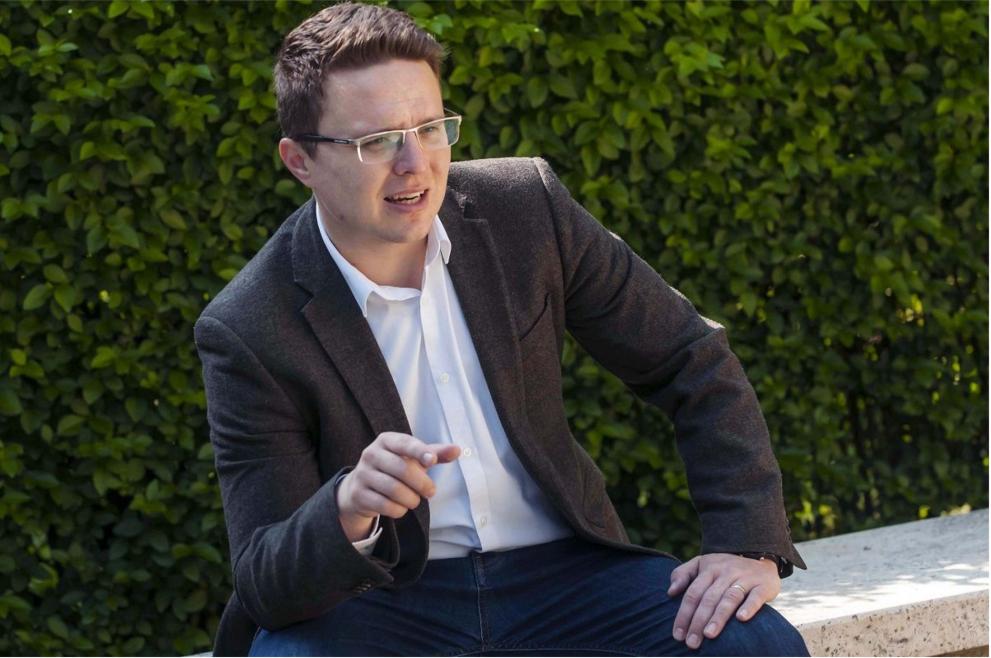
As Covid-19 restrictions are being lifted across Europe, conventional forms of political activism are making a return to public spaces. European citizens’ initiatives (ECI) face the ambitious task of gathering over one million signatures from across seven different EU Member States, over the course of just one calendar year. It is therefore important that ECIs make effective use of all available means for campaigning, because it is very difficult to reach success with a campaign carried out exclusively online.
In light of this timely and concrete learning opportunity, the ECI Forum held a workshop on in-person campaigning and signature collection on 12 April 2022, with the aim of supporting current campaigners and future organisers. The event was moderated by Daniela Vancic, European Programme Manager at Democracy International.
Overview of the paper signature submission process for ECIs
Daniela Vancic shared her expertise during the first session of the workshop, which was specifically focused on providing a procedural overview of the paper signature submission process for ECIs. According to current data, an average of 40% of the signatures collected in successful ECI campaigns were gathered on paper. Such a large share highlights the need for understanding and fostering the offline signature collection process!
The first thing that an ECI campaigner must know is which paper form they need to use. There are two versions of the signature collection form, with one version that requires the national ID number of the signatory and another version that requires other data. It is up to the Member States to decide which of the two forms to implement. Eighteen Member States currently require an ID number and a full name, while the rest ask for personal details such as a full name, address and date of birth for verification to be possible. When a person signs an ECI online, they select their nationality and are automatically presented with the correct form, but for this to happen manually, organisers must print the correct national form from their ECI organiser account. The account allows organisers to download the signature collection form for any EU country and in any EU language. However, a national form also has to correspond with signatures from citizens in the same country. Practically, this just means that a German citizen and a French citizen cannot sign the same form.
In order to submit the paper signatures for verification, organisers will have to scan the forms and upload them to their organiser account. The file exchange service allows for both the scanned paper signatures and the online signatures to be submitted for verification to the competent authorities in a given Member State. Once the signatures are submitted and verified, the Member States will follow-up with an official certificate, usually within three months’ time.
Daniela recommended that organisers aim to gather an additional 10% of signatures beyond the required threshold in each country, because a certain fraction of the signatures will likely be rejected. Authorities in the Member States do not provide direct information on why certain signatures get rejected. However, signatures may be rejected when personal details on the form do not match other national data, when a person is below the required age or because handwritten information on a paper form is unclear. If organisers suspect that a Member State has disqualified collected signatures without a good reason, there is also a way to appeal against the decision.
How did former campaigners collect signatures in-person? What were their strategies for campaign promotion?
Olga Kikou, former manager of the End the Cage Age ECI, stressed the importance of having physical stands where pedestrians could directly sign a paper form. She recalled the benefit of providing physical material, such as brochures that people could take home, because most passers-by were unlikely to stop to discuss the initiative. A brochure could be just as valuable as a signed paper form if it leads to a signature online. Campaign stands may be set up in many cities across the EU, but this requires a great number of volunteers who are willing to commit time and effort for the cause. As such, it remains imperative that organisers coordinate with their network throughout the entire process. Olga also remarked that signature collection rates would not stay consistent throughout the year, and therefore, it was worth having a well-designed backup plan for raising the numbers once they start to fall. The End the Cage Age campaign made use of traditional print media, but also celebrities and politicians for gaining visibility.
Olga Kikou. Source: compassion-in-world-farming.org
Find further advice on signature collection from Olga Kikou
Balázs Tárnok, former manager of the Hungarian campaign for the Minority Safepack ECI, agreed with many of Olga’s insights on how to gain visibility. The campaign made use of TV advertisements and traditional print media, and they even appeared on a TV talk show, which helped to raise publicity. Balázs also mentioned the importance of organising in-person collection drives in many different locations. The campaign managed to get the Hungarian postal service and several municipalities to offer their spaces to serve as signature collection points. In order to gain signatures in rural areas, the campaign successfully mobilised the national farmers union to spread the message in provincial communities. Much akin to Olga’s advice, Balázs reiterated the importance of working to keep up the momentum. His ECI’s strategy was to launch a ‘big push’, during which their network of partners organised a competition for gathering signatures in a short time span. The ECI raised over 50% of its signatures in Hungary by means of in-person campaigning, which showcases the importance of developing a strategy for conventional activism.
Balázs Tárnok. Source: vasarnap.hu
More tips from the Minority Safepack Campaign
Another featured speaker was Ralf Oswald, former campaigner for Radentscheid Aachen, a local initiative which aimed to improve bicycling infrastructure in the German city of Aachen. Ralf noted that his campaign had carefully considered how to identify its target audience. Their research found that 10% of the city’s population was willing to use a bike as a means for transportation irrespective of the quality of the city’s biking infrastructure. 60% of the population, however, was significantly more likely to embrace the use of bicycles if the infrastructure was improved. In order to garner support amongst the target audience, Ralf emphasised the importance of using positive messaging about the likely benefits of improved biking infrastructure - as opposed to shaming the city for its feeble biking conditions. Over 100 people volunteered to campaign in different locations around the city, which was made possible through the support of their network of partners.
Federico Esposito Alaia, Naples Coordinator for the Luca Conscioni Association, campaigned for a recent national initiative to legalise euthanasia in Italy. Federico echoed Olga’s assertion of the importance of physical stands and added that it was worthwhile for organisers to pick good locations to reach their target audience. As most pedestrians would pass the stand in a matter of seconds, Federico expressed the importance of adopting a simple but captivating message to engage potential signatories. This may actually be one of the core challenges of in-person campaigning. All of the speakers addressed the difficulty of capturing people's attention, and they all mentioned the challenge of balancing the explanation of thematic content with the need for a simple, positive means for engagement.
Conclusion
The insights shared by the invited speakers capture the diversity of the campaigning experiences that the European Citizens’ Initiative Forum can help to facilitate. The ECI Forum is an online platform that can provide independent advice for ECI organisers, with support ranging from legal guidance and fundraising to communication strategy and much more. If you are interested in starting an ECI, join the ECI Forum to learn everything that you might need to know.
EU Member states by ID number requirement
ID number requirement:
Austria, Belgium, Bulgaria, Croatia, Cyprus, Czech Republic, Estonia, Hungary, Italy, Latvia, Lithuania, Malta, Poland, Portugal, Romania, Slovenia, Spain, Sweden.
Residence address and date of birth requirement:
Denmark, Finland, France, Germany, Greece, Ireland, Luxembourg, Netherlands, Slovakia.
For more information, please consult the ECI Forum:
https://citizens-initiative.europa.eu/data-requirements_en#Application-of-the-rules-in-each-country
Contributors
Otso PekonenOtso Pekonen is an intern at Democracy International and a recent BSc graduate in Philosophy, Politics and Economics (PPE) from the Vrije Universiteit Amsterdam.



Leave a comment
To be able to add comments, you need to authenticate or register.